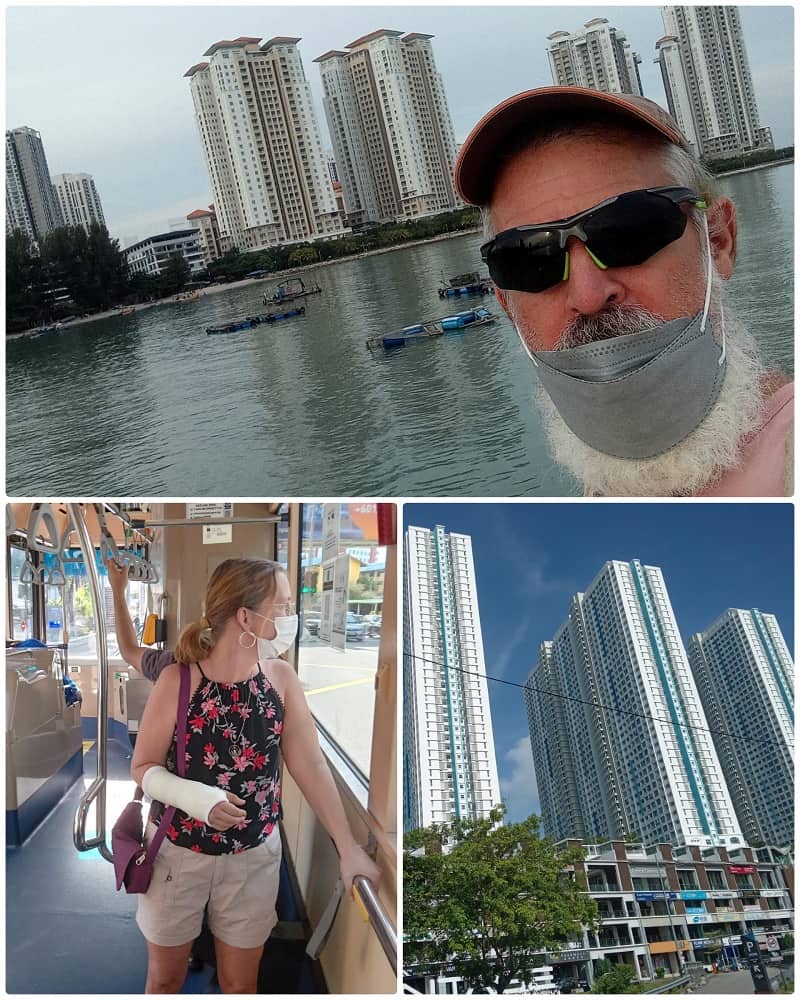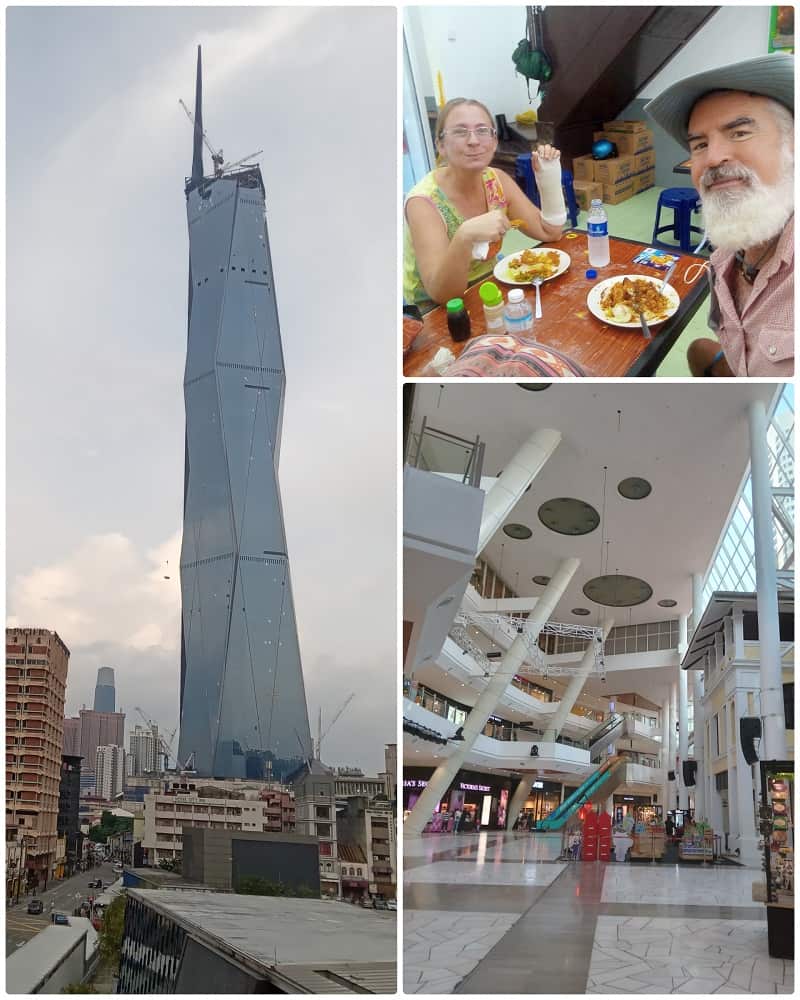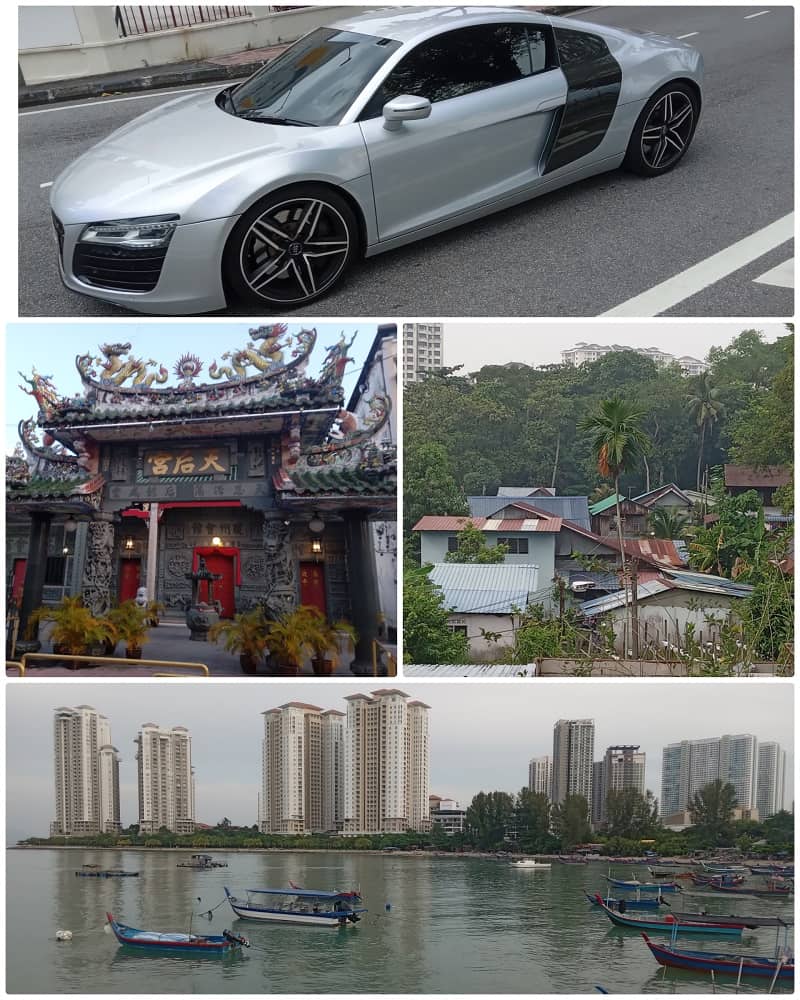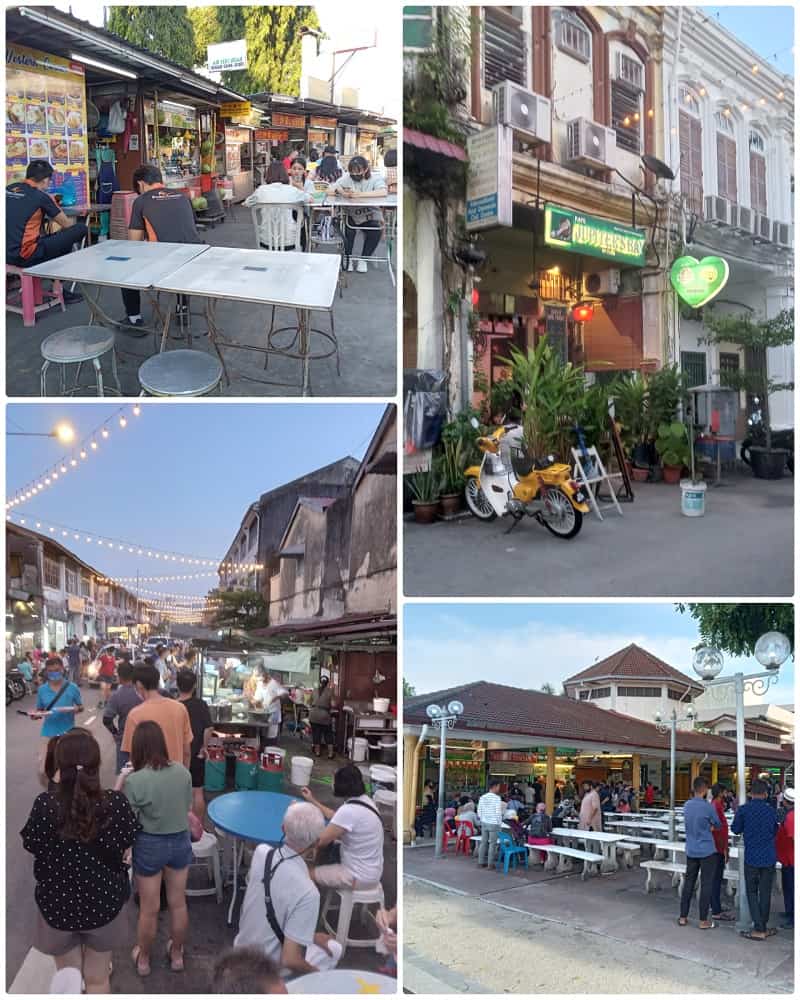Last Updated on June 3, 2023 by Ellen
Last Updated on June 3, 2023 by Ellen
The early retirement world tour continues in Malaysia! It’s our third time in this country since 2018.
After Thailand, this is now our second international destination since leaving the Philippines, where we waited out the whole period of worldwide COVID restriction.
In restarting our slow travel lifestyle, we didn’t know what to expect. But in Malaysia, we are certainly safe and comfortable and enjoying all the modern comforts and conveniences of this fast-advancing nation.
Such is especially welcome since my wife, Ellen, continues to recover from a broken wrist sustained in Thailand and now slowly healing in a cast.

Of course, after living in the rural central Philippine islands, Kuala Lumpur and Penang Island (two of Malaysia’s largest urban centers) are like another world. And Malaysia as a whole feels like a ‘step-up’ from Thailand. In many ways, this place is the same or better than ‘the West’.
Early retirement to Malaysia: What life is really like here
We’ve already completed numerous medical checks that were put on hold during the COVID crisis; all were easy to schedule, with first-world class facilities, processes, and medical providers — and very reasonable prices.
Modernization everywhere
We’ve noted continued building and development that in recent decades has propelled Malaysia to the forefront of economic success in Southeast Asia. From our Airbnb rental in Kuala Lumpur, we counted over 25 cranes currently constructing new skyscrapers. From what I know, any city in North America is lucky to have three or four such projects.
While in Kuala Lumpur, I checked out the new prideful symbol of the city and country — Merdeka 118; the second tallest building on planet earth at 2,228 feet, scheduled to be completed within a year. Here in Penang, we are surrounded by 30-40-50 story condo towers – and more are being built.

The malls in Malaysia continue to be the biggest and most luxurious we’ve experienced. We have noticed some vacancies and they don’t seem as busy as pre-COVID (same as Thailand), but all the top fashion designers and international chains have multiple stores here.
Further, the electronic and tech sector is bigger than ever. Everything high tech is available – including all Chinese brands. Never mind inflation or economic uncertainty, consumerism is still a growing reality.
In our view, the best thing about the huge malls remain the inexpensive food courts that are always found in each one. For just a few bucks, we often enjoy sampling several small plates of local and regional specialties in air-conditioned comfort.
Heavy traffic
On the downside, vehicular traffic is borderline insane. Luxury cars are everywhere. I’ve seen a Mclaren, Lamborghini, Ferrari, Maserati, being driven; and more high-end Mercedes, BMWs, Porsches than I’ve seen anywhere. A news story said the country is adding about a half-million new vehicles per year to the roadways. The Malaysian population numbers less than 33 million people in total.
Motorcycles, which most everywhere in Asia far outnumber automobiles, are a minority here. In fact, it seems the majority of motorbikes that still exist are part of the new mobile/delivery economy; Grab Food, Food Panda, Lalamove.
One problem: these delivery guys are dangerous. They drive on sidewalks, ignore red lights, go the wrong way, speed… anything for quick delivery and to make a buck. I guess I understand, and it probably occurs everywhere, but walking and bicycle riding can be hazardous.

Politeness everywhere
Thankfully, this country does seem to have the kind of structure and mentality that will hopefully balance what sometimes feels like a ‘Western’ rush.
People are still respectful and tolerant (food deliveries excepted). Muslims, Buddhists, Christians, Hindus, and others live in relative harmony (although we’ve been assured there are unseen divisions).
Everyone wears a face mask – many even outdoors. Hand sanitizer and distancing are still in use. There’s no objection to preventing COVID transmission in the name of personal liberty or political persuasion.
Despite the crazy traffic, you hardly ever hear a car horn. Road rage is unknown. I’ve NEVER heard a loud car stereo system. Ambulance sirens, a few motorcycle exhausts, and Muslim prayer calls are about the only loud noises we’ve heard.
In fact, despite the obvious economic advances, the culture remains reserved, traditional, sensible. I haven’t witnessed anyone urinating in public (commonplace in the Philippines). I’ve not seen a single male without a shirt on. Despite the heat and humidity, even tank tops and shorts are rare — except during exercise.
This place is clean. You have to look hard to find litter. Smoking seems pretty rare too. Unfortunately, like many developing nations, a lot of plastics and disposables are used. But at least the refuse isn’t laying around on the ground and recycling is practiced.
Undoubtedly, the Muslim prohibition on drinking and other ‘indecency’ laws serve to moderate behaviors that are manifest in other Asian nations. Even I try to do my seaside beer drinking discreetly. Easy enough.
People are more reserved, too – at least toward us westerners. Unlike the Philippines and some poorer Asian nations, Malaysians almost seem too busy to be bothered with foreigners. Good for them. Still, it is quite different from places where we have often been treated as a wealthy curiosity.
Entering Malaysia inthe COVID era
As for Westerers/tourists/visitors: Malaysia reopened without testing or quarantine restrictions on May 1, 2020 – FOR VACCINATED TRAVELERS.
We entered on June 9 at a northern land border with Thailand. We did show proof of vaccination and answer questions about our travel at that time. (Monkey pox was also an immigration concern – but not yet detected then in Asia, where we have been since 2018).
Unvaccinated or partially vaccinated foreign visitors to Malaysia remain subject to testing and quarantine policies found on official sites like these below. Such requirements can change without warning. Prospective travelers should recheck regulations frequently from official government and airline sites. (I cannot link those here because they change too frequently, but a quick Google search will help you here.)
The ‘contact tracing’ cell phone app MySejahtera that Malaysia used internally during the lockdown phase of COVID, now serves as a ‘travelers card’ for visitors. You MUST download and use it. We did.
Malaysian immigration officials at the Padang Besar land border kindly and quickly filled in our app info after checking our World Health Organization issued vaccine cards. Other visitors will undoubtedly have to complete the MySejahtera process themselves BEFORE arrival.
The app continues to run in the background during any visit. There has been some internal political wrangling over the MySejahtera app contract, funding, and ownership.
Foreigners
From what we can see, the number of Westerners is greatly decreased here at present – but some are slowly returning. Unlike other SE Asian countries, Malaysia is far less focused on ‘international vacationers’. Most Brits, Aussies, Euros we’ve had contact with are long-term retired residents, many own property. (Those people have residence visas.)
Malaysia has publicly pushed ‘domestic tourism’ as a way to revive the countries travel and hospitality industries. We have noted what appear to be weekend and holiday visitors during the weeks we have stayed on Penang Island, which is a Malaysian ‘getaway’ spot. Chinese visitors, common to this area, are still prevented by China’s ban on leisure travel.
In all, like many places, the travel/tourism sector seems to be sputtering along – further weighed by economic and virus uncertainties worldwide.
COVID-era prices
The moderation in visitation makes Malaysia even more attractive and comfortable for us. Prices have risen, but not excessively. We’d estimate 10 to15% in general; from a lower ‘starting base’ too.
We are paying the same rent as pre-COVID. A check of Airbnb shows prices all over the board but plenty of vacancies and markdowns.
Old charm in your early retirement to Malaysia
Lastly, although modernization is everywhere, it isn’t hard to find ‘old Malaysia’. Indeed, one thing we truly enjoy is the classic and colonial architecture, neighborhoods, and lifestyles that are, sometimes awkwardly mixed together with new.
That would include the innumerable ‘hawker centers’ which can still be found throughout the country. Similar to mall food courts, hawker centers are groups of cheap, made-to-order, food vendors operating carts/stalls that usually surround outdoor or covered picnic-table style seating.

Add up all that I’ve mentioned above and you have today’s Malaysia. A unique, vibrant, prosperous, ever-changing mixture of old and new, east and west, Muslim and other. A place we have returned to experience on three separate trips – and where we’ll be for a couple more months thanks to the easy and free tourist visa policy for U.S. citizens (90 days each stay).
As always, be thankful and generous, happy trails & more beer.
Life is NOW!
Thanks for reading, “Early retirement to Malaysia: What life is really like here.”
For more retirement travel ideas and insight —

